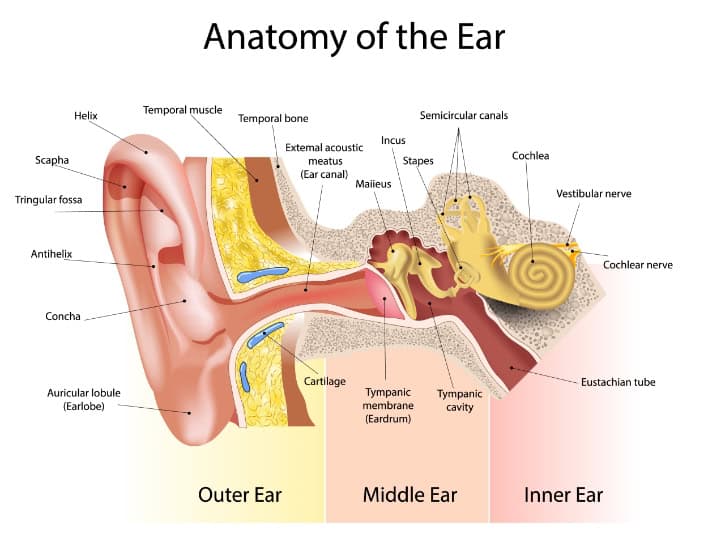How Hearing Works
Understanding how hearing works brings great clarity to a complex system–a system where many fragile parts of the ear work together to relay signals to the brain.
Hearing is crucial for understanding the world around us. The complex process of hearing involves detecting sound and assigning meaning to it, thus making it a crucial part of understanding our reality. Before we are even born, we are hearing the world around us and trying to make sense of it.
The ear is made up of three parts that are important for detecting sound: the outer, middle, and inner ear. All three parts work together to move sound from the outer part through the middle, and into the inner part of the ear.
According to the Institute on Deafness and Other Communication Disorders (NIDCD), hearing depends on a series of complex steps (described below) that change sound waves in the air into electrical signals.



- Sound waves enter the outer ear and travel through a narrow passageway called the ear canal, which leads to the eardrum.
- The eardrum vibrates from the incoming sound waves and sends these vibrations to three tiny bones in the middle ear. These bones are called the malleus, incus, and stapes.
- The bones in the middle ear amplify, or increase, the sound vibrations and then them to the cochlea, a snail-shaped structure filled with fluid, in the inner ear. An elastic partition runs from the beginning to the end of the cochlea, splitting it into an upper and lower part. This partition is called the basilar membrane because it serves as the base, or ground floor, on which key hearing structures sit.
- Once the vibrations cause the fluid inside the cochlea to ripple, a traveling wave forms along the basilar membrane. Hair cells—sensory cells sitting on top of the basilar membrane—ride the wave. Hair cells near the wide end of the snail-shaped cochlea detect higher-pitched sounds, such as an infant crying. Those closer to the center detect lower-pitched sounds, such as a large dog barking.
- As the hair cells move up and down, microscopic hair-like projections (known as stereocilia) that perch on top of the hair cells bump against an overlying structure and bend. Bending causes pore-like channels, which are at the tips of the stereocilia, to open up. When that happens, chemicals rush into the cells, creating an electrical signal.
- The auditory nerve carries this electrical signal to the brain, which turns it into a sound that we recognize and understand.
Protect Your Hearing
Your hearing is a priceless commodity, so take care of it. Here are some things you can do to protect your hearing.
- Turn the Volume Down When Listening to Music or Watching TV
- Avoid Prolonged Exposure to Loud Noises
- Wear Protective Hearing Devices (i.e., Earplugs, Earmuffs) in Noisy Environments
- Get Your Hearing Checked Regularly
- Use a Washcloth to Clean Your Ears (Avoid Using Cotton Swabs)
- See a Professional to Remove Excess or Impacted Earwax
Contact Us
If you notice any changes to your hearing, contact Integrated ENT to make an appointment with an audiologist. We will perform a comprehensive hearing evaluation for you, and make treatment recommendations that best meet your needs and lifestyle. To learn more, please browse our website. You can also request an appointment online or call us at
(303) 706-1616.









